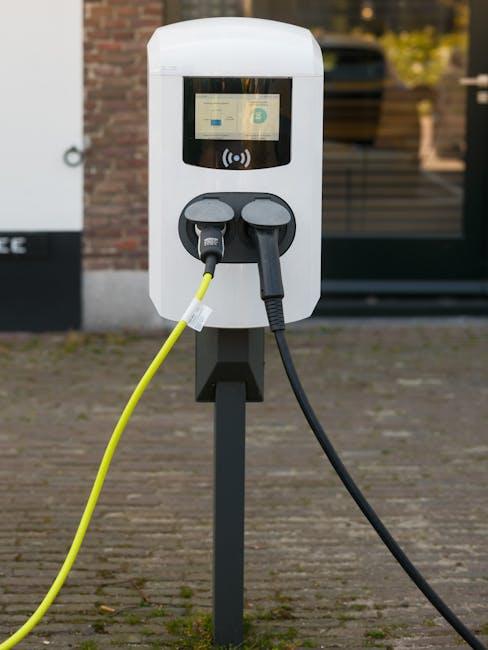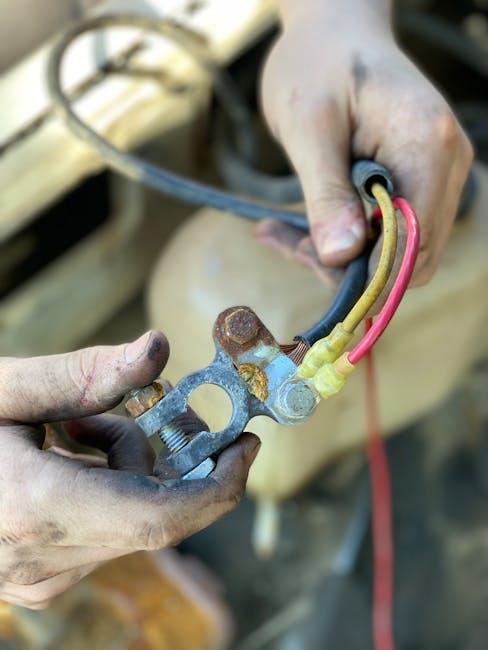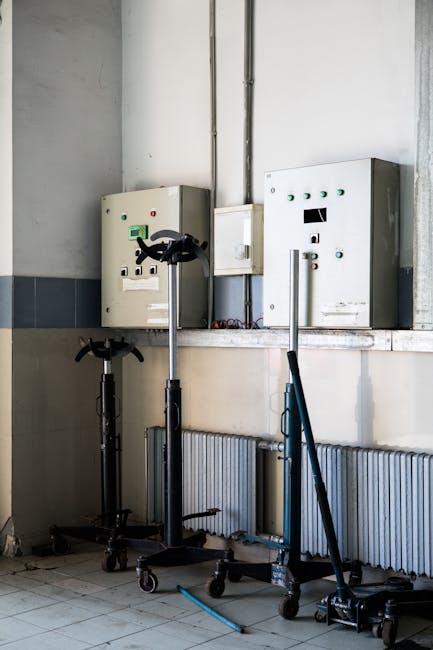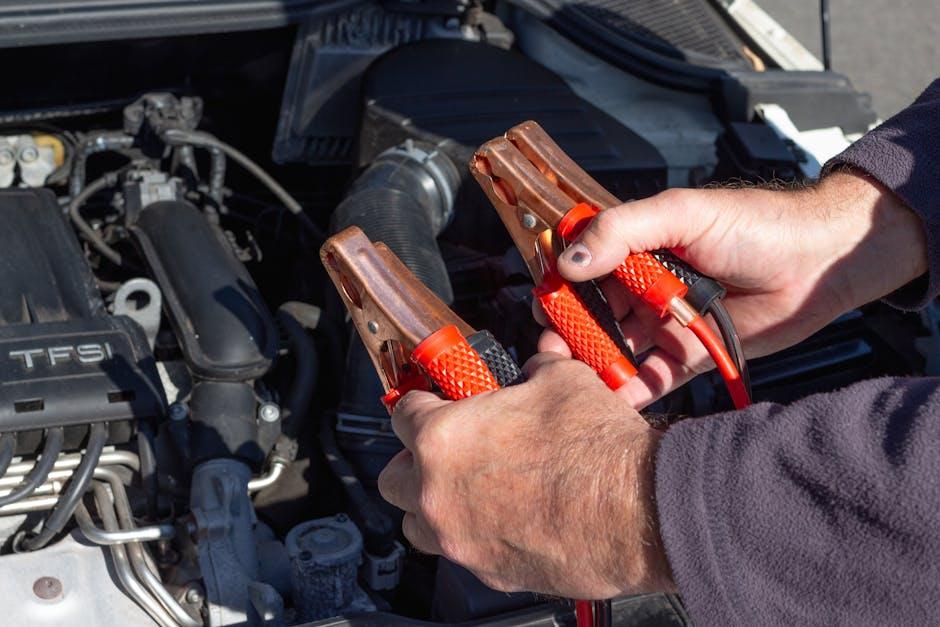In the intricate world beneath your car’s hood, a silent network of wires and circuits keeps your vehicle alive and humming. When those electrical systems falter, the symptoms can be as mysterious as a riddle—dim lights, stubborn starters, or erratic dashboard displays. Understanding how to diagnose car electrical problems is like unlocking a hidden code that bridges the gap between frustration and solution. This guide will illuminate the path through diagnostic tools, common issues, and step-by-step approaches, empowering you to decode the electrical whispers of your vehicle with confidence and clarity.
Table of Contents
- Understanding the Basics of Car Electrical Systems
- Identifying Common Signs of Electrical Issues
- Essential Tools for Diagnosing Electrical Problems
- Step-by-Step Guide to Testing Electrical Components
- Interpreting Diagnostic Codes and What They Mean
- Preventive Tips to Avoid Future Electrical Failures
- Q&A
- To Wrap It Up

Understanding the Basics of Car Electrical Systems
At the heart of every car lies an electrical system that powers everything from the ignition to the interior lights. This intricate network is made up of several key components, including the battery, alternator, starter motor, and a maze of wires and fuses. Understanding how these elements work together is essential for spotting where potential issues may arise. The battery acts as the energy reservoir, supplying power when the engine is off, while the alternator replenishes this energy during driving. Meanwhile, fuses protect circuits from overloads, preventing damage to sensitive electronics.
The complexity of modern vehicles means that electrical faults can stem from a variety of sources. To break down the fundamentals, consider these primary areas:
- Power source problems: Issues with the battery or alternator voltage output.
- Wiring and connections: Corrosion, breaks, or loose terminals disrupting current flow.
- Control modules: Faulty sensors or software glitches affecting system behavior.
| Component | Role | Common Issue |
|---|---|---|
| Battery | Stores and supplies electrical power | Discharge, corrosion |
| Alternator | Charges battery during operation | Faulty diode, belt slip |
| Starter Motor | Initiates engine cranking | Worn brushes, solenoid failure |

Identifying Common Signs of Electrical Issues
When your vehicle starts exhibiting electrical quirks, spotting the warning signs early can save you from costly repairs. Flickering dashboard lights, dim headlights, or an unresponsive power window can all hint at underlying electrical faults. Other red flags include the car’s engine stalling without a clear reason, repeated blown fuses, or a battery that drains unusually fast. Electrical issues often manifest subtly at first, so a keen eye toward irregularities in your vehicle’s electrical components can make all the difference.
Keep an eye out for these common symptoms, which often guide mechanics to the root cause:
- Intermittent electrical component operation – devices that work sometimes and not others.
- Unusual smells – burning or melting wiring can indicate short circuits.
- Warning lights – the battery or check engine light that flickers or stays on.
- Failing accessories – radios, seat heaters, or dashboard modules malfunctioning.
| Symptom | Possible Cause | What to Check |
|---|---|---|
| Dimming Headlights | Weak Alternator | Alternator Voltage Output |
| Engine Stalls | Faulty Ignition Switch | Ignition Wiring |
| Battery Drains Rapidly | Parasitic Draw | Electrical Load with Engine Off |
| Blown Fuses | Short Circuit | Wire Insulation & Connections |

Essential Tools for Diagnosing Electrical Problems
Diagnosing electrical issues in your car requires more than just guessing or replacing parts at random. To get to the root of the problem, you’ll need a reliable set of tools designed to measure and detect faults in your vehicle’s wiring and components. Multimeters are indispensable for checking voltage, current, and resistance, allowing you to pinpoint broken circuits or faulty connectors with precision. Additionally, a test light can quickly confirm the presence of voltage in your car’s electrical system, making it a handy tool for fast troubleshooting. Don’t overlook the importance of a good wire stripper and crimping tool, which can help you repair or replace damaged wiring safely and effectively.
For more advanced diagnostics, an OBD-II scanner unlocks access to your vehicle’s onboard computer systems, revealing error codes that can direct you to specific electrical or sensor issues. Pair this with a circuit tester to check fuses and relays, and you’ll have a comprehensive kit for almost any electrical troubleshooting task. Here’s a quick glance at essential tools and their primary uses:
| Tool | Primary Use | Best For |
|---|---|---|
| Multimeter | Measuring voltage, current, resistance | Testing circuits & sensors |
| Test Light | Checking presence of voltage | Quick fuse & wiring checks |
| OBD-II Scanner | Reading diagnostic codes | Engine & electrical system faults |
| Circuit Tester | Testing fuses and relays | Fuse box troubleshooting |
| Wire Stripper & Crimper | Stripping insulation & crimping connectors | Wire repair & replacement |

Step-by-Step Guide to Testing Electrical Components
Begin by gathering the essential tools: a digital multimeter, test light, and insulated gloves. Safety first—always disconnect the battery before testing to avoid shocks or shorts. Start with visual inspections of the wiring and connectors for any signs of wear, corrosion, or loose connections. Then, methodically test fuses by setting your multimeter to continuity mode—this quick check will help isolate blown fuses without dismantling anything complicated. With the car’s ignition off, place the multimeter probes on either side of the fuse; a beep or reading indicates an intact circuit.
Next, move on to testing larger components like the battery, alternator, and sensors. Use these guidelines for your multimeter settings and connections:
| Component | Multimeter Setting | Testing Tips |
|---|---|---|
| Battery | DC Voltage (20V range) | Measure voltage across terminals; 12.6V+ is healthy |
| Alternator | DC Voltage (20V range) | Test while engine runs; 13.7V to 14.7V indicates proper charging |
| Sensors | Resistance (Ω) | Compare readings with manufacturer specs |
By following these steps, you can quickly pinpoint problematic electrical parts with precision. Remember to consult your vehicle’s manual for model-specific values and to always reconnect all components properly after testing.

Interpreting Diagnostic Codes and What They Mean
Understanding the symbols and alphanumeric sequences coming from your car’s onboard diagnostics (OBD) system is a crucial step toward pinpointing electrical faults. These codes act as cryptic messengers, each representing a specific malfunction or sensor anomaly. By scanning your vehicle with an OBD-II reader, you’ll receive codes such as P0XXX or B1XXX, indicating issues ranging from engine sensor failures to body control system glitches. Rather than treating these codes as mere error messages, view them as clues that guide your troubleshooting process, helping you avoid unnecessary repairs.
Not all diagnostic codes are created equal, and interpreting them requires context. For example, a code related to a circuit voltage irregularity may hint at loose wiring, while another connected to sensor output might suggest a damaged component. The table below offers a quick reference for common OBD-II code ranges and their general system associations, streamlining your understanding:
| Code Range | System | Typical Issue |
|---|---|---|
| P0000-P0999 | Powertrain | Engine and transmission faults |
| B0000-B0999 | Body | Doors, windows, lighting, air conditioning |
| C0000-C0999 | Chassis | ABS, suspension, steering system faults |
| U0000-U0999 | Network | Communication between modules |
- Remember: Some codes may trigger false positives due to transient conditions. Always verify by retesting after fixes.
- Use trusted resources: Refer to your vehicle’s service manual or trusted online databases for precise coding definitions.
- Consider the whole system: Intermittent electrical problems might stem from grounding issues or wiring harness damage, not just the code-indicated part.

Preventive Tips to Avoid Future Electrical Failures
Maintaining your vehicle’s electrical system requires consistent attention to detail and a proactive approach. Regular inspections of wiring harnesses and connectors can help identify corrosion or wear before these issues impact performance. Ensure all connections are secure and free from dirt or moisture, which often cause short circuits or intermittent faults. Using dielectric grease on exposed terminals forms a protective barrier, reducing the risk of oxidation that can lead to future malfunctions. Additionally, keeping your battery terminals clean and ensuring your battery is fully charged helps stabilize voltage delivery throughout the electrical system.
Implementing a routine maintenance schedule can dramatically reduce unexpected breakdowns. Pay particular attention to these vital points:
- Inspect fuses and relays for signs of damage or fading
- Test alternator output to guarantee proper charging
- Monitor dashboard warning lights and address any alerts promptly
- Replace worn-out or cracked wires immediately
| Preventive Action | Recommended Frequency |
|---|---|
| Battery Terminal Cleaning | Every 6 months |
| Wiring Inspection | Annually |
| Alternator Testing | Every 12,000 miles |
| Fuse & Relay Check | During routine servicing |
Q&A
Q&A: How to Diagnose Car Electrical Problems
Q1: What are the common signs that indicate an electrical problem in a car?
A: Electrical issues often reveal themselves through flickering or dim headlights, a non-responsive dashboard, malfunctioning power windows or locks, and unusual sounds such as clicking when turning the key. Sometimes the car may fail to start entirely, or warning lights on the dashboard may illuminate sporadically.
Q2: Where should I begin diagnosing a suspected electrical problem?
A: Start with the basics—check the battery’s condition and connections. Ensure terminals are clean, tight, and corrosion-free. Next, inspect the fuses as a blown fuse often points directly to trouble. It’s helpful to have a wiring diagram of your car’s electrical system to trace potential issues.
Q3: How can I test the car battery effectively?
A: Use a multimeter to measure the battery voltage. A fully charged battery should read around 12.6 volts with the engine off. When the engine runs, voltage typically rises to 13.7–14.7 volts, indicating the alternator is charging the battery properly. Low or fluctuating readings suggest battery or charging system problems.
Q4: What role does the alternator play in the car’s electrical system?
A: The alternator recharges the battery while the engine is running and powers electrical components. If the alternator fails, the battery drains quickly, causing electrical accessories to falter. Signs of alternator problems include dim lights, dashboard warning lights, and difficulty starting the car.
Q5: How do I identify wiring issues or shorts?
A: Physical inspection is key—look for frayed, melted, or broken wires. Use a continuity tester or multimeter to check for breaks. If a fuse blows repeatedly, it points to a short circuit. Listening for unusual sounds like buzzing or crackling can also help pinpoint wiring faults.
Q6: Can faulty electrical components mimic other car problems?
A: Absolutely. For example, a bad ignition switch may prevent the engine from starting, mimicking mechanical failure. Similarly, a malfunctioning sensor can trigger check-engine lights, making an electrical issue appear as an engine problem.
Q7: When should I consult a professional mechanic?
A: If you’re uncomfortable working with electrical systems or after you’ve exhausted basic troubleshooting without success, it’s wise to seek professional help. Complex issues like computer module failures or intricate wiring harness problems require specialized diagnostic equipment and expertise.
Q8: What tools are essential for diagnosing car electrical problems at home?
A: A digital multimeter is indispensable for measuring voltage, current, and resistance. A test light helps quickly check power presence. Basic hand tools for removing panels and fuses, alongside a wiring diagram specific to your vehicle, will make the process smoother.
Q9: How can regular maintenance help prevent electrical failures?
A: Keeping battery terminals clean, regularly inspecting wiring for wear, and replacing aging components can stave off many electrical problems. Also, avoid overloading circuits with aftermarket devices and ensure proper fuse ratings for all accessories installed.
Q10: Is there any trick to understanding complex electrical systems in newer cars?
A: Modern vehicles often rely on computer-controlled systems, which can be daunting. Learning to read OBD-II scanner codes can provide valuable clues. Patience and a methodical approach—testing one system at a time—are your best allies in unraveling electronic mysteries under the hood.
To Wrap It Up
Navigating the maze of car electrical problems can feel daunting, but with patience, the right tools, and a methodical approach, even the most perplexing issues become manageable puzzles. By understanding the basic principles and trusting your diagnostic instincts, you empower yourself to keep your vehicle’s electrical system running smoothly. Remember, every flicker and every click tells a story—listen closely, and you’ll uncover the clues that lead to a well-lit, reliably charged drive ahead.

